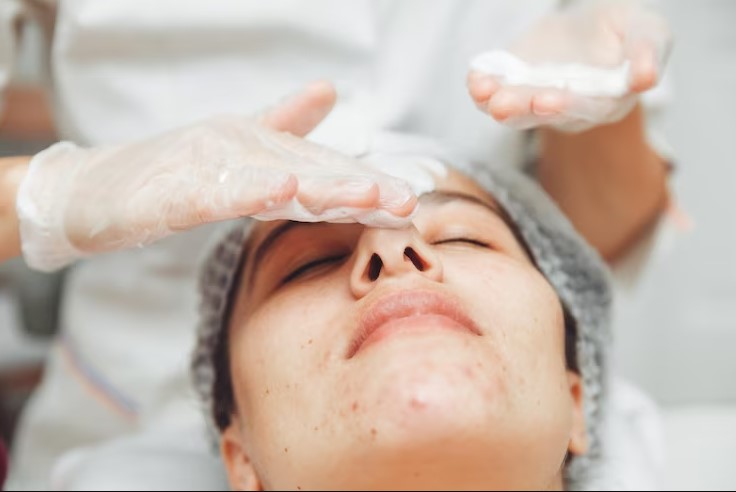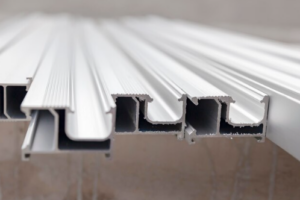
Acne scars may be difficult to treat, affecting our skin and self-esteem in the process. Many people follow this route in an attempt to improve the clarity and smoothness of their skin. We’ll examine the many facets of acne scar removal best treatment in this article, providing guidance and information to help you successfully navigate such a challenging environment.

Prevention Strategies to Minimize Acne Scarring
Preventing Acne and Its Scars
- Gentle Skincare: Avoid using harsh scrubs and stick to light cleansers. Overly harsh behaviour can exacerbate acne and raise the possibility of scarring.
- Stop Popping Acne: As tempting as it may seem, popping pimples can exacerbate inflammation and scarring by forcing bacteria deeper.
- Sun Protection: Being in the sun can make scars worse. Use broad-spectrum sunscreen at all times.
Lifestyle and Nutrition in Reducing Acne Scars
Acne and the scarring that results from it are influenced by your lifestyle and diet. An abundance of processed foods and sweets in the diet might aggravate acne. Consuming a diet rich in fruits, vegetables, and water will help you keep your skin healthy. Acne prevention also heavily depends on stress management and obtaining adequate sleep.
Navigating Through Various Acne Scar Treatment Options
Topical Treatments: Your First Line of Defence
When treating acne scars, topical treatments are frequently the first thing to try. These consist of gels and creams with components including vitamin C, retinoids, and alpha hydroxy acids (AHAs). They function by promoting skin cell turnover, which can help scars progressively disappear. For example, retinoid cream accelerates the regeneration of cells, assisting in the removal of outermost skin layers and lessening the appearance of superficial scars.
Procedural Treatments: Stepping Up the Game
Procedural acne scar removal methods are used when topical therapies are insufficient. For instance, chemical peels entail the use of a solution to remove the outermost layer of skin, exposing smoother skin beneath. Another well-liked option is laser treatment. It targets scar tissue with concentrated light to encourage the creation of new, healthy skin. Collagen induction treatment, or micro-needling, uses small needles to inflict microscopic punctures on the skin, promoting collagen formation and the body’s own healing mechanisms.
The Power of Natural Remedies in Treating Acne Scars
Natural solutions can assist your skin’s healing process in a gentle yet efficient manner. Because of its calming qualities, aloe vera can aid in reducing inflammation and accelerating the healing of scars. Another marvel of nature is tea tree oil, which is well-known for its antibacterial qualities and is thus an excellent ally in the fight against acne as well as in the process of mending acne scars.
Homemade therapies like masks made of honey and lemon might also be helpful. Lemon juice’s citric acid can aid in lightening scars, while honey has inherent antimicrobial and moisturising properties. But keep in mind that natural treatments are primarily about promoting the health of the skin and may be more effective for moderate scarring than they are for more severe scarring.
Advanced Medical Treatments: When to Consider Professional Help
Dermal Fillers: Instantaneous Enhancement for Dismal Scars
Dermal fillers are a popular option for those seeking an instant improvement in the look of certain scars. These entail the injection of materials such as hyaluronic acid below the scar to bring it up to the level of the surrounding skin. Fillers provide a temporary solution, but they also work well when combined with other long-term therapies.
TCA CROSS: Targeting Deep Scars
For deep scars such as ice picks, a specialised method called Trichloroacetic Acid Chemical Reconstruction of Skin Scars (TCA CROSS) is used. To encourage collagen formation at the scar’s base, high-concentration TCA is applied directly to the scar. Deep scars can be elevated using this technique to make them less obvious.
Fractional CO2 Laser Therapy: A Game-Changer in Scar Treatment
One peculiar application in the field of scar therapy is the Fractional CO2 Laser. It makes tiny cuts in the skin with carbon dioxide lasers. This acne scar treatment procedure encourages the underlying layers of skin to generate new collagen in addition to removing the skin’s scars. This procedure may greatly enhance skin texture and is most suited for deep scars; however, it does take some healing time.
Subcision: Releasing Tethered Scars
A surgical method created especially for rolling scars is subcision. To achieve a smoother skin surface, fibrous bands that pull the scar downward are broken with a specialised needle. For best results, this technique is frequently used in conjunction with other procedures like lasers or fillers.
Pico Laser: Accuracy and Little Downtime
The Pico Laser is praised for its accuracy and quick recovery. It uses incredibly brief pulses to break up scar tissue and encourage the synthesis of collagen. In addition to addressing pigmentation problems, this therapy is very beneficial for a variety of scar forms. It’s the preferred choice for anyone looking for large gains without a lot of downtime.
Platelet-Rich Plasma (PRP) Therapy: Harnessing the Body’s Healing Power
PRP acne scar removal therapy is a novel treatment that enhances the look of scars by using the patient’s own blood. After blood is extracted, platelets are concentrated, and the scarred region is reinjected. This platelet-derived therapy is beneficial for a variety of scar types because it releases growth factors that promote healing and collagen synthesis.
Radiofrequency micro-needling: Increased Induction of Collagen
Radiofrequency (RF) micro-needling is a technique that advances conventional micro-needling. It combines the skin-tightening properties of radiofrequency radiation with the collagen-inducing effects of micro-needling. The mixture smoothes and tightens the skin for a more youthful appearance, making it an effective treatment for rolling and atrophic scars.
Tailoring Your Acne Scar Treatment: Personalized Approaches for Different Scar Types
Understanding Your Scar Type
The most common types of scars include:
- Ice Pick Scars: Deep and narrow, resembling puncture marks.
- Boxcar Scars: Broad with sharp edges, often giving a pitted look.
- Rolling Scars: Wavy indentations caused by damage under the skin.
- Hypertrophic Scars: Thick, raised scars, usually at the site of the acne.
Choosing the Right Treatment
Choosing the right acne scar treatment is the next step after determining your scar type. Laser treatments and micro-needling can promote deep skin healing for deeper scars such as ice picks. Dermal fillers or chemical peels may be beneficial for shallower boxcar scars. Subcision, a technique that releases the attached scar tissue, can be quite helpful for those rolling scars.
Maintaining Skin Health Post-Treatment: Essential Skincare Tips
Post-Treatment Skincare
To keep your skin moisturised, use moisturisers and gentle cleansers. Remember to use sunscreen, too! It is essential to shield your skin from the sun to stop further deterioration and scars.
Stopping Future Explosions
Focus on avoiding acne if you want to prevent new scars. This entails maintaining a skin-type-appropriate skincare regimen, cleaning your skin, and refraining from popping or plucking zits. Consult a dermatologist for advice on the best products for your skin type and any other questions you may have.




